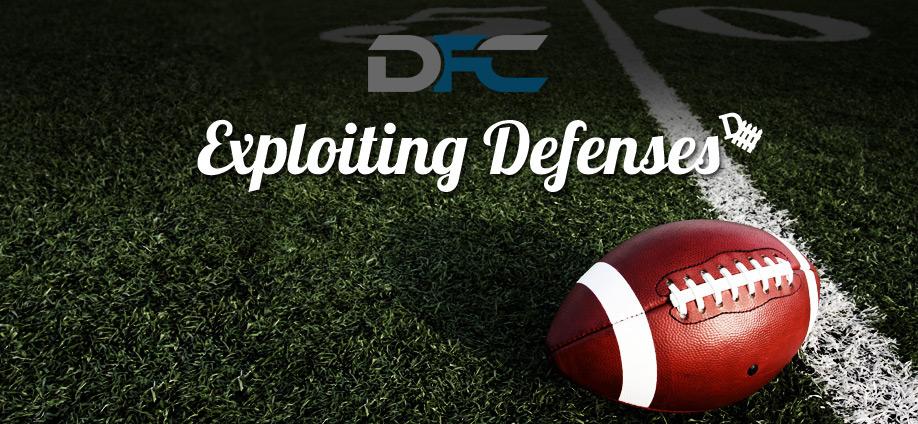NFL Sports Betting Toolkit
One of the best ways to identify probable success for your NFL DFS roster is to attack bad defenses and defensive players. The great thing about the NFL is there are few outliers when it comes to a teams performance, especially after we have seen enough games to identify the truly terrible defenses and players. This article is going to look at how we can exploit bad defenses and defensive players to our advantage.
Overall Team Defense
We'll get more into individual defensive players vs. position match ups in a moment but the first thing you should look at is how the team operates as a whole. To do that is fairly simple – look at how many yards a game they are giving up via passing and rushing, how many points per game they allow, and then also look at how Vegas sees them performing that week.
A prime example of how we could use this to our advantage came to us in Week 12 of the 2014 NFL season. We had a 2-8 Titans team traveling to face the 7-3 Eagles. The Eagles, deservedly so, were prohibitive favorites and would win easily 43-24. However, those that paid attention would know one thing about the Eagles and that is they struggled against the pass.
I don't know precisely where they stood at that point in the season but what I do know is that they finished second worst in the league in passing yards allowed per game. They had just gotten lit up by Aaron Rodgers and the Packers the previous week giving up 341 yards and 3 TD's in what was essentially three quarters of play. The week before that they blew out the Panthers but still gave up 306 yards and 2 TD's to Cam Newton. Now Zach Mettenberger is definitely no Aaron Rodgers, and certainly no Cam Newton, but he had one big DFS advantage on those two going into his game with the Eagles.
What's that you might ask? His price tag on the DFS sites – that's what. By taking Mettenberger, you allowed yourself to pretty much fill up your roster with studs at every other position. This is precisely the kind of play that can win you GPP's. Cmagoon2323 rostered Mettenberger (who was 1.7% owned that week) in the DraftKings Millionaire Maker and the 23.6 fpts he put up at a 5,300 salary helped him take home $50,000 for his third place finish. Mettenberger's final numbers that game were 345 yards and 2 TD's.
That's precisely how you find value in NFL DFS. You can find it in the most unknown places by merely looking at the numbers.
DvP
Each week over the course of the NFL season, numerous sites will have rankings of how teams perform against each position. This is called Defense vs. Position or DvP. Again I don't have the data for that particular week but I do know that the New Orleans Saints would finish 4th worst in RB DvP for the season and heading into week 12, Justin Forsett was priced great at $6,500 on DraftKings and was just off of a dominating performance against the Titans where he put up 26.2 fpts. It was a great match up against the Saints and the trends were there for a big game from Forsett. The Ravens were running the ball well and the Saints weren't stopping it. The 8% of the field that took a shot at Forsett putting up another big game were rewarded with a 36 fpt performance on DraftKings. The winner of the Millionaire Maker that week had Forsett on his roster (as did the aforementioned third place finisher).
So again we want to look for teams that do bad against a position and target players at that position who are facing them. Seems almost too simple, but it's a key component of NFL research.
Defensive Back Statistics
One last metric we can evaluate is how defensive backs perform. There are sites out there like profootballfocus.com (“PFF") that will break down everything a defensive back does. You can find out how many times they are targeted, and what percentages of receptions they allow on those targets just to name a few. Looking at this data we can find match ups we want to avoid (i.e. anyone against Revis who ranked third in PFF coverage in 2014 or Sherman who ranked first in coverage in 2014) and match ups we want to exploit.
Looking at match ups we want to exploit is simply a matter of evaluating the PFF coverage rankings and finding who that CB will be covering. Last year, David Amerson of WAS ended with one of the five worst coverage rankings of the 71 players who played more than half their teams snaps. In week 13 he was facing the pass-heavy offense of the Colts and was the starting RCB. To make things even better, the starting LCB was Chase Minnifield who was making his first start of the season. He would end the season ranked in the bottom 20% of all CB's in coverage ranking. Add in Bashaud Breeland and his not so great CB ranking as the slot CB and this made it a great time to target the receivers on the Colts and if you did so (and also had the wherewithal to stack Luck) you had yourself a good day.
The Colts would go on to win 49-27 with Luck throwing for 370 yards and 5 TD's. Donte Moncrief, who had been a disappointment for much of the season, finally went off with 134 yards receiving and 2 TD's. T.Y. Hilton had a steady 5 receptions for 62 yards and a TD. Coby Fleener, with no competition at TE that week, ended with 127 yards and 2 TD's.


Login or Register to join the conversation.